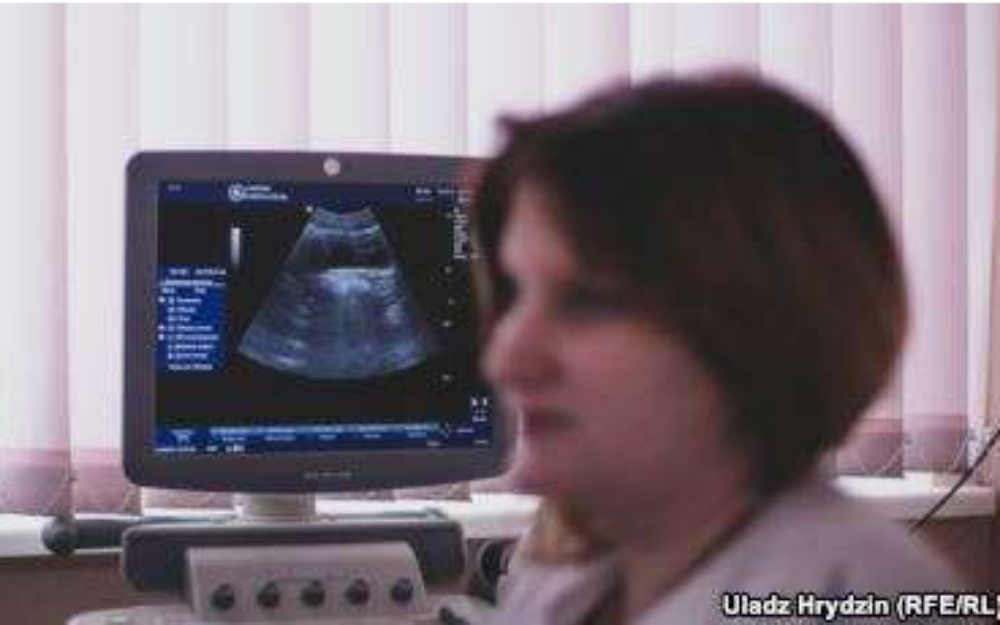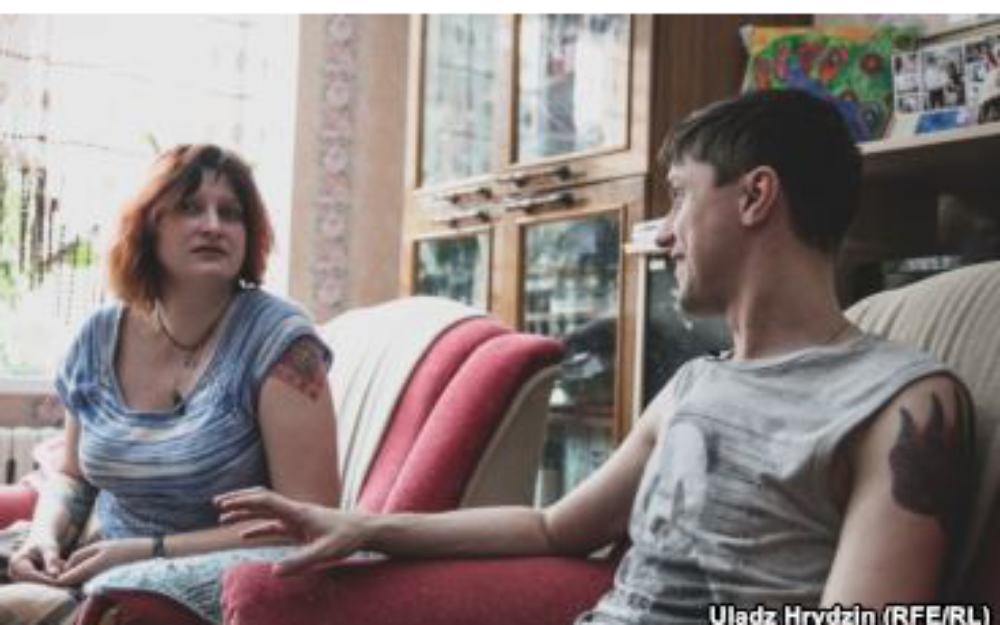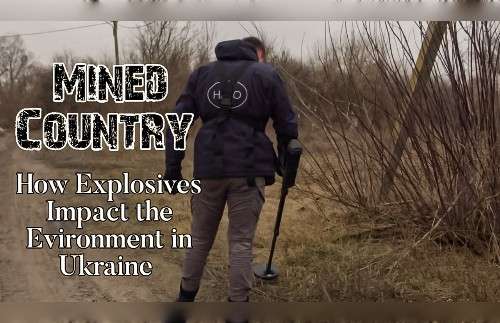Anton Trafimovich, Uladz Hrydzin, Andrey Rabchyk & Tony Wesolowsky

Iryna Kazlouskaya was a student in Minsk years ago when she got the news she was pregnant.
Relatives and doctors, she says, were unanimous as to what she should do: abort the child.
“I was really confused. A lot of that had to do with the reaction of my relatives, who, putting it mildly, weren’t too happy. They thought being pregnant would be the end of my life and career,” Kazlouskaya told RFE/RL’s Belarus Service in a recent interview.
She eventually had the child but, due to her experience, became convinced that a large part of Belarusian society viewed abortions as a form of birth control.
“Women are more afraid of the dentist than an abortion,” Kazlouskaya said, in a country that has one of the highest rates of abortion in the world.

Like other countries in Europe, Belarus, with a population of some 9.5 million, is struggling to cope with falling birth rates. Desperate to boost the numbers, Belarusian President Alyaksandr Lukashenka’s government has offered benefits and other incentives to encourage couples to have larger families.
In 2014, Belarus even passed legislation giving doctors the right to opt out from performing abortions. Gynecologists at one hospital in Belarus took up the offer — and one of them was Kazlouskaya, who also practices as an obstetrician. Suddenly, the Lahojsk Central Regional Hospital, in a city 40 kilometers north of Minsk with a population of some 12,000, found itself in the spotlight, with the media and government officials turning up to check it out.
Kazlouskaya says she does not support an outright ban on abortions. Rather, she says women in Belarus need more information. That, she says, was lacking when she was pregnant for the first time. According to Kazlouskaya, for much of Belarusian society, pregnancy is viewed negatively.
“Pregnancy is still viewed first and foremost as a problem, pain, and a struggle. There is generally no positive image of motherhood or fatherhood. That’s something that is found only in fiction,” Kazlouskaya explains.
She said the pressure, mostly from family, nearly convinced her to have an abortion, until roommates and other friends at university reacted differently. “At the dorm, they gave me ice cream and strawberries. They all told me, ‘You shouldn’t [eat it], but you must,’” Kazlouskaya recounts, adding the kindness shown her tipped her in favor of giving birth.
It was that ice cream with strawberries that saved the life of my child,” she says, half-jokingly, adding that it was the experience of having her first child that convinced Kazlouskaya to become a gynecologist herself.
“As a patient, I saw things from the inside. I thought maybe I could change the system for the better.”
As a student, however, she saw the flaws in the system were deep-rooted. When she was a premed student, Kazlouskaya says one of the first procedures she was trained for was how to perform abortions, a procedure she never considered performing abortions for women who ask for it as helping women.”
In 2014, shortly after she took up her post as a gynecologist at Lahojsk Central Regional Hospital, Belarus’s parliament passed legislation allowing doctors the choice not to perform abortions amid concerns the practice was becoming overly commonplace.
Belarus’s post-World War II population peaked in 1993 with 10.2 million people. After that it began to drop, reaching its current number of 9.5 million — a trend that is largely linked with the deteriorating economic situation in the country.
According to a 2012 study in the international medical journal The Lancet, Belarus, along with other countries in Eastern Europe, has the highest abortion rate in the world, with 43 abortions per 1,000 women. However, the numbers have dropped significantly since the 2000s. According to data from Belarus’s National Statistics Committee, the abortion rate in Belarus was about 24.7 abortions per 100 live births in 2016. That compares to 128.7 abortions per 100 live births in 2000. In general, abortion rates were high in the Soviet Union and its satellites, where it was commonly used as a form of contraception.
Shortly after the legislation entered the books, Kazlouskaya signed an affidavit stating her intention not to perform the procedure. The entire gynecology unit followed suit, with five other doctors signing similar statements. From February 2015, abortions have not been performed at the hospital except for cases when the woman’s life is in danger or in cases of rape.
a woman in Lahojsk is determined to have an abortion there, she must first consult a psychologist, as must all women in Belarus opting for an abortion. If after that she is still determined to go through with it, the hospital will provide her care up to the time of the procedure, when the patient is transported to a hospital in Minsk where the abortion takes place.
The hospital remained largely off the radar for Belarusians, both the public and the government, until October 2017 when Belarusian media got a whiff of the story and visited Lahojsk. Suddenly, the facility and the doctors were the talk of the country, especially on social media.
Critics say the doctors shouldn’t deny services they are trained to dispense, including those in the health profession.
“In general, I am opposed to trained obstetricians refusing to do part of their work. I believe if you are getting into this career, abortions become part of your duty,” says Natalia, an intern at a hospital in Hrodno, who didn’t want to disclose her last name.
Some of the criticism, according to Kazlouskaya, has been vitriolic. “They threatened us with killing our children and other threats. But nothing happened. Some wrote that we refuse to do abortions, but then we performed them afterwards on the same women and in private clinics,” Kazlouskaya recounted.
Statistics on the number of abortions at the hospital are not kept. Doctors can only say roughly that it is less than before. There used to be lot of abortions, remembers Kazlouskaya, explaining each was noted on a yellow form and collected in a folder that was stored away in a filing cabinet.
Her husband, Vasil Kazlouski, who is also a doctor at the hospital in Lahojsk, says he remembers a time when “three to five” abortions were performed at the hospital per week.
In 2018, Kazlouskaya said 10 women who visited the hospital with the aim of getting an abortion ultimately changed their minds. “More people are coming in for family planning. So, something is working after all.”
Kazlouskaya said it’s all about educating — not just women but also their partners — about their choices.
“In my vision of abortion and termination of pregnancy, we don’t need to fight against abortions, but for women. We need to understand the reasons why a woman wants an abortion in the first place.”
(See the original story in Belarusian here.)
Copyright (c) 2019. RFE/RL, Inc. Reprinted with the permission of Radio Free Europe/Radio Liberty, 1201 Connecticut Ave NW, Ste 400, Washington DC 20036.










